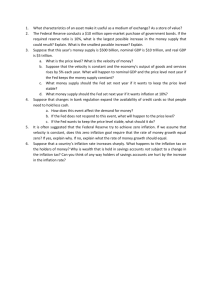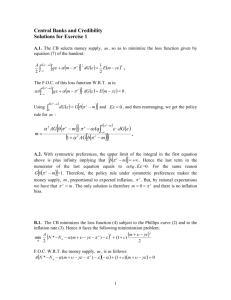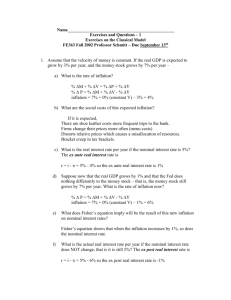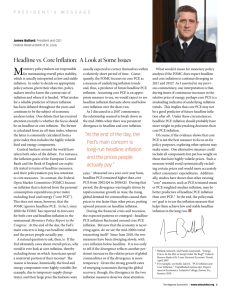Federal Reserve Inflation Targeting
advertisement
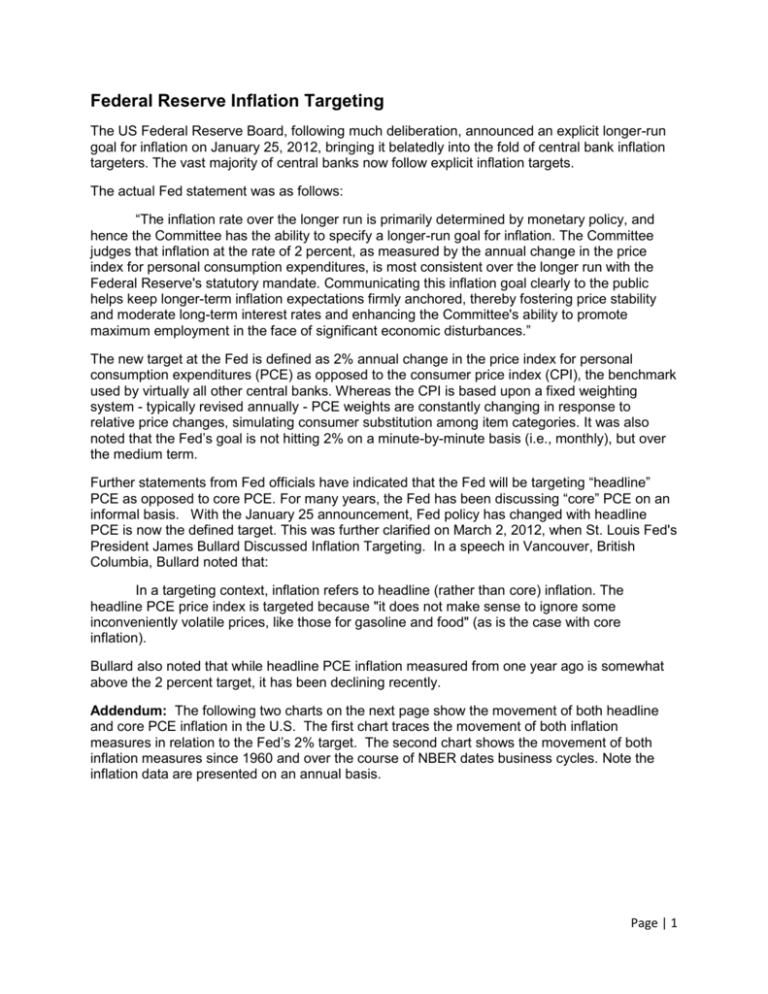
Federal Reserve Inflation Targeting The US Federal Reserve Board, following much deliberation, announced an explicit longer-run goal for inflation on January 25, 2012, bringing it belatedly into the fold of central bank inflation targeters. The vast majority of central banks now follow explicit inflation targets. The actual Fed statement was as follows: “The inflation rate over the longer run is primarily determined by monetary policy, and hence the Committee has the ability to specify a longer-run goal for inflation. The Committee judges that inflation at the rate of 2 percent, as measured by the annual change in the price index for personal consumption expenditures, is most consistent over the longer run with the Federal Reserve's statutory mandate. Communicating this inflation goal clearly to the public helps keep longer-term inflation expectations firmly anchored, thereby fostering price stability and moderate long-term interest rates and enhancing the Committee's ability to promote maximum employment in the face of significant economic disturbances.” The new target at the Fed is defined as 2% annual change in the price index for personal consumption expenditures (PCE) as opposed to the consumer price index (CPI), the benchmark used by virtually all other central banks. Whereas the CPI is based upon a fixed weighting system - typically revised annually - PCE weights are constantly changing in response to relative price changes, simulating consumer substitution among item categories. It was also noted that the Fed’s goal is not hitting 2% on a minute-by-minute basis (i.e., monthly), but over the medium term. Further statements from Fed officials have indicated that the Fed will be targeting “headline” PCE as opposed to core PCE. For many years, the Fed has been discussing “core” PCE on an informal basis. With the January 25 announcement, Fed policy has changed with headline PCE is now the defined target. This was further clarified on March 2, 2012, when St. Louis Fed's President James Bullard Discussed Inflation Targeting. In a speech in Vancouver, British Columbia, Bullard noted that: In a targeting context, inflation refers to headline (rather than core) inflation. The headline PCE price index is targeted because "it does not make sense to ignore some inconveniently volatile prices, like those for gasoline and food" (as is the case with core inflation). Bullard also noted that while headline PCE inflation measured from one year ago is somewhat above the 2 percent target, it has been declining recently. Addendum: The following two charts on the next page show the movement of both headline and core PCE inflation in the U.S. The first chart traces the movement of both inflation measures in relation to the Fed’s 2% target. The second chart shows the movement of both inflation measures since 1960 and over the course of NBER dates business cycles. Note the inflation data are presented on an annual basis. Page | 1 Page | 2





